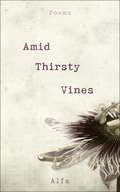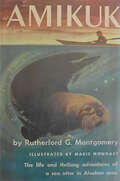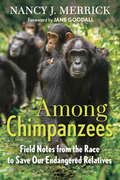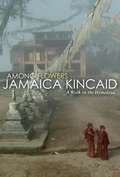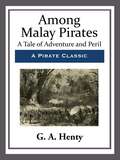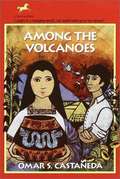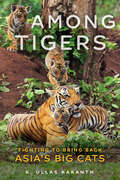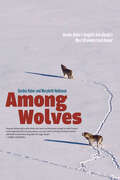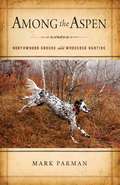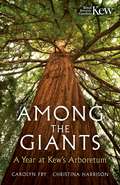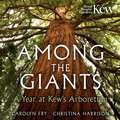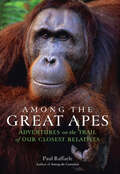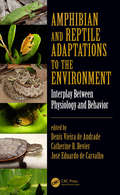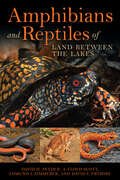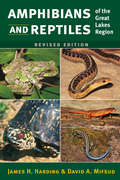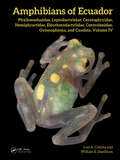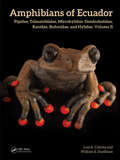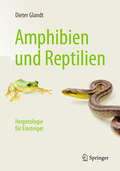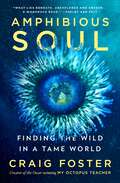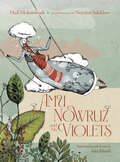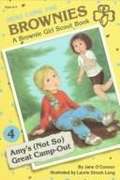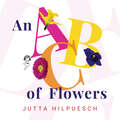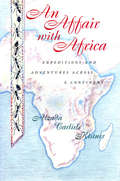- Table View
- List View
Amid Thirsty Vines: Poems
by AlfaThemes of self-discovery, tending the garden of the soul, and nurturing yourself into blossom, Amid Thirsty Vines by Instagram poetry star Alfa is the collection you need to feel the power of the beautiful flowers within you, and to find the love you deserve. This volume belongs in the collection of every modern poetry fan.
Amikuk
by Rutherford MontgomeryTHIS IS a tale of adventure in the seas around the Aleutian Islands, seas that are populated by sharks and sea lions, whales and porpoises—and sea otters. Amikuk is a young sea otter. As he grows up and learns to swim and dive for his own food, he also learns that the life of a sea otter is full of dangers—from men who will stop at nothing to gain his valuable pelt, from killer whales, and from deadly sharks. In this exciting and unusual story, Amikuk learns to take care of himself in dangerous waters, and—with the help of an unknown friend, an Aleutian boy named Peter—manages to escape from the clubs and bullets of determined hunters. It is Peter who saves Amikuk and his family from certain death more than once—although the otters never know of Peter's guardianship of their lives. Woven into the story are the excitement of a shipwreck, a thrilling contest between a small band of men and a herd of huge sea lions, Amikuk's narrow escapes from sea marauders. All in all, this is a book that will delight all youthful readers.
Among Chimpanzees
by Jane Goodall Nancy J. MerrickA former student and colleague of Jane Goodall shares stories of chimps and their heroes, and takes readers on a journey to save man's closest relative. Unbeknownst to much of the public, chimps are in trouble: censuses show them to be extinct in four African countries and nearly so in ten others. A large percentage of the remaining populations live in unprotected, increasingly fragmented forests. When Nancy Merrick learned these startling facts in 2009, she decided it was past time to discover the extent to which chimpanzees are at risk across Africa and what can be done. Merrick had begun working with primates in 1972 as a young field assistant in Jane Goodall's famous Gombe camp. Like the rest of the world at the time, she was swept up in the excitement of discovering the remarkable world of chimpanzees--their ability to fashion tools, their dazzling intelligence, and their complex relationships and societies. From that moment on, her human-centered worldview shifted, and she became a devoted advocate for our closest genetic relatives. When Merrick returns to Africa decades later, she's alarmed by how much has changed. Human activity, such as agriculture and logging, has encroached on natural habitats throughout equatorial Africa, endangering chimpanzees, gorillas, and bonobos. In an effort to understand what we can do to save great apes, Merrick connects with primatologists and conservationists who are trying to protect the last great forests. Visits to some of Africa's parks, sanctuaries, and expanding agricultural areas reveal the urgency of the problems and the inspiration of the people leading the search for solutions. Along the way, Merrick demonstrates that the best hope for chimps and other great apes lies in connecting conservation to humanitarian efforts, ensuring a healthy future for animals and humans alike. Among Chimpanzees is at once an inspiring chronicle of Merrick's personal search to learn how chimps are faring across Africa and in captivity, a crucial eyewitness account of a very critical period in their existence, and a rousing call for us to join the efforts to be a voice for the chimpanzees, before it's too late.From the Hardcover edition.
Among Flowers: A Walk in the Himalaya
by Jamaica KincaidAnyone familiar with Jamaica Kincaid's work knows that the natural world and in particular, plants and gardening are especially close to her heart. In this vivid account she invites us to accompany her on a seed-gathering trek in the Himalaya. For Kincaid and three botanist friends, Nepal is a paradise a place where a single day's hike can traverse climate zones from sub-tropical to alpine encompassing flora suitable for growing in their home grounds from Wales to Vermont. A wonderful blend of introspective insight and beautifully rendered description, Among Flowers is a seriously entertaining thoroughly engaging and characteristically frank memoir from one of the most distinctive and striking voices writing today.
Among Malay Pirates
by G. A. HentyAmong Malay Pirates is a story of courage and danger. Join our heroes as they pit themselves against blood thirsty pirates and epic sea storms. A magnificent swashbuckling story of a grander more adventurous time.
Among The Volcanoes
by Omar CastañedaIsabel Pascay longs to go to school and become a teacher, but her dream just doesn't seem possible in the small Guatemalan village where she lives. The villagers expect Isabel to follow tradition and marry her boyfriend, handsome Lucas Choy. And her mother is ill, but resists Western medicine, relying on a local healer. As the eldest daughter, all the family burdens seem to fall on Isabel. Can she hold on to her dreams for the future and achieve her goal?
Among Tigers: Fighting to Bring Back Asia's Big Cats
by K. Ullas KaranthToday ten times more tigers live in captivity than survive in the wild. For over five decades, K. Ullas Karanth has been engaged in the struggle to bring wild tigers back from the brink in India, their last remaining wild stronghold. He tells the story of the tiger itself—its incredible biology, its critical role in shaping natural ecosystems of Asia, and the unique place it holds in our collective imagination.Among Tigers is the story of how we wound up with fewer than 5,000 wild tigers, and how, with focused efforts we can grow that population ten times or more in a few decades. In doing so, we would bring not only the world's largest and most beloved feline back from the brink, but also save countless other species that share the tigers habitats from the freezing forests of Siberia to the tropics of India. Karanth shares the adventurous real-life story of his quest to save a species and, along the way, the hopeful realization that tiger conservation is a battle that can be won.Ultimately, the book is a roadmap showing us how to not only to save the greatest of great cats, but to bring it roaring back at numbers never before seen in our lifetimes.
Among Wild Horses: A Portrait of the Pryor Mountain Mustangs
by Hope Ryden Lynne PomeranzSee the wild horses run! The Pryor Mountain Mustangs have roamed the high desert and mountains of the American West for centuries. Descended from steeds brought over by the Spanish conquistadores, their untamable nature and enduring courage inspire awe in all who have the chance to see them. Photographer Lynne Pomeranz spent two years with these magnificent creatures along the Montana-Wyoming state line, and her startlingly intimate photographs capture the resilience and free spirit that define these mustangs.
Among Wolves: Gordon Haber's Insights into Alaska's Most Misunderstood Animal
by Marybeth Holleman Gordon HaberAlaska’s wolves lost their fiercest advocate, Gordon Haber, when his research plane crashed in Denali National Park in 2009. Passionate, tenacious, and occasionally brash, Haber, a former hockey player and park ranger, devoted his life to Denali’s wolves. He weathered brutal temperatures in the wild to document the wolves and provided exceptional insights into wolf behavior. Haber’s writings and photographs reveal an astonishing degree of cooperation between wolf family members as they hunt, raise pups, and play, social behaviors and traditions previously unknown. With the wolves at risk of being destroyed by hunting and trapping, his studies advocated for a balanced approach to wolf management. His fieldwork registered as one of the longest studies in wildlife science and had a lasting impact on wolf policies. Haber’s field notes, his extensive journals, and stories from friends all come together in Among Wolves to reveal much about both the wolves he studied and the researcher himself. Wolves continue to fascinate and polarize people, and Haber’s work continues to resonate.
Among the Aspen: Northwoods Grouse and Woodcock Hunting
by Mark ParmanFollowing his English setters into thickets in search of grouse and woodcock, Mark Parman feels the pull of older ways and lost wisdom. How rare it is, in our high-tech world, to find oneself completely off the track, bewildered in the wild, and then find the path home by sight and scent and memory. Among the Aspen interweaves tales of companionable dogs, lucky hunts, and favorite coverts where quarry lurks with ruminations on the demise of hunting traditions, the sale of public lands and the privatization of places to hunt, the growing indifference to science, and the loss of wilderness on a planet increasingly transformed by the sprawl of humanity.
Among the Giants: A Year at Kew's Arboretum
by Kew GardensStretching across two-thirds of the Gardens, the arboretum at Kew surrounds the glasshouses in a leafy enclave to walk, wander and discover nature's beauty. The 12,000 trees rooted in the arboretum represent more than 2,000 species, including rare and ancient varieties. This great collection contains trees as old as the Gardens themselves, many that cannot be found anywhere else in Britain.But who looks after these vast landscapes?Introducing the Tree Gang - Kew's team of eight who work tirelessly throughout the year to maintain this rare collection.In this new book from Kew, you'll discover the fascinating work of the Tree Gang: the team of eight that care for the trees at Kew. Going behind the scenes, you'll learn more about life at Kew from the people who tend and care for the Gardens - from the daily tree assessments to the intermittent tree felling. As the climate becomes more variable, the gang's work is ever more crucial as they brace for the storms ahead.AMONG THE GIANTS weaves together heartwarming stories alongside the fascinating life of trees. This book will inspire you to learn from the experts, and grow an appreciation for the trees around you.
Among the Giants: A Year at Kew's Arboretum
by Kew GardensStretching across two-thirds of the Gardens, the arboretum at Kew surrounds the glasshouses in a leafy enclave to walk, wander and discover nature's beauty. The 12,000 trees rooted in the arboretum represent more than 2,000 species, including rare and ancient varieties. This great collection contains trees as old as the Gardens themselves, many that cannot be found anywhere else in Britain.But who looks after these vast landscapes?Introducing the Tree Gang - Kew's team of eight who work tirelessly throughout the year to maintain this rare collection.In this new book from Kew, you'll discover the fascinating work of the Tree Gang: the team of eight that care for the trees at Kew. Going behind the scenes, you'll learn more about life at Kew from the people who tend and care for the Gardens - from the daily tree assessments to the intermittent tree felling. As the climate becomes more variable, the gang's work is ever more crucial as they brace for the storms ahead.AMONG THE GIANTS weaves together heartwarming stories alongside the fascinating life of trees. This book will inspire you to learn from the experts, and grow an appreciation for the trees around you.
Among the Giants: A Year at Kew's Arboretum
by Kew GardensStretching across two-thirds of the Gardens, the arboretum at Kew surrounds the glasshouses in a leafy enclave to walk, wander and discover nature's beauty. The 12,000 trees rooted in the arboretum represent more than 2,000 species, including rare and ancient varieties. This great collection contains trees as old as the Gardens themselves, many that cannot be found anywhere else in Britain.But who looks after these vast landscapes?Introducing the Tree Gang - Kew's team of eight who work tirelessly throughout the year to maintain this rare collection.In this new book from Kew, you'll discover the fascinating work of the Tree Gang: the team of eight that care for the trees at Kew. Going behind the scenes, you'll learn more about life at Kew from the people who tend and care for the Gardens - from the daily tree assessments to the intermittent tree felling. As the climate becomes more variable, the gang's work is ever more crucial as they brace for the storms ahead.AMONG THE GIANTS weaves together heartwarming stories alongside the fascinating life of trees. This book will inspire you to learn from the experts, and grow an appreciation for the trees around you.
Among the Great Apes: Adventures on the Trail of Our Closest Relatives
by Paul Raffaele“Raffaele spins riveting tales of his mission to visit every species and subspecies of great ape in its natural habitat.” —Discover magazineAward winning adventure journalist Paul Raffaele’s Among the Great Apes is the first book in over a decade—and possibly the last ever—to take its readers into the lives of our charismatic cousins in their native habitats. Humans have long felt a deep attraction to the great apes: bonobos, chimpanzees, orangutans, and gorillas. We see a reflection of ourselves in their faces, mannerisms, and interactions with kin. But we also look to them for contrast. Part of how we define ourselves as human rests with recognizing the differences between us and the great apes, in spite of the substantial amounts of DNA we share.Many great primatologists have dedicated their lives to the observation and study of these species in their natural habitats. Unfortunately, many of these sheltering places no longer exist. The great apes live in some of the most volatile regions on our planet, lands plagued by civil unrest, poverty, environmental degradation, and corrupt governments. In this book, Raffaele goes into the wild to see how our closest relatives are faring today. He takes us through isolated jungles and misty mountain forests, sharing wonderfully intimate observations of ape life paired with the most current research about their behavior.Raffaele, called the “last of the great, old-fashioned adventure writers” by the Washington Post, introduces us to leading conservationists and researchers working to save and study the apes. But best of all, he gets up close to these amazing animals. He describes orangutans fashioning umbrellas from long leaves, a young chimpanzee mothering a “baby” log, and the bonobos’ lively ritual of swinging like gymnasts through the treetops before building elaborate nests to sleep in. Moving from Borneo to the Congo, Among the Great Apes brings us to the natural habitats of all the species and subspecies of the great apes—a trip possible for perhaps the last time.“A powerful account of the author’s journey into our planet’s last remaining gorilla communities.” —The Ecologist“Fantastic. . . . Anyone who cares about animals will benefit hugely from reading it.” —Shaun Ellis, star of Animal Planet’s Living with the Wolfman and author of The Man Who Lives with Wolves“Profound and important . . . Raffaele shows us how amazing interesting and complex great apes are.” —David Greer, coordinator, World Wildlife Fund’s African Great Apes Program
Amphibian and Reptile Adaptations to the Environment: Interplay Between Physiology and Behavior
by Denis Vieira de Andrade Catherine R. Bevier José Eduardo de CarvalhoDespite their diversity, amphibians and reptiles share many physiological traits, such as their dependence on external heat sources for body temperature regulation, that are of pivotal importance to their ability to cope with the environment. Considerable variation in physiological capabilities exists in these groups and often can be related to seasonal and geographic differences in environmental parameters. This book provides a comprehensive and integrative view of the interplay between physiology and behavior in amphibians and reptiles, leading to a better understanding of the subject. The book covers topics that have recently been in the spotlight for scientific research on the physiology, behavior, and conservation of amphibians and reptiles. It brings together recent information from a range of disciplines that address critical topics for understanding their biology. As these studies are scattered across articles in specialized journals, this book provides a single and expanded source summarizing such advancements. Amphibian and Reptile Adaptations to the Environment: Interplay Between Physiology and Behavior maintains a solid scientific basis for the biological topics covered. However, it presents the material in a clear and direct manner so that it is accessible even to non-biologists interested in the basic biology, behavior, and ecology of these animals as well as how these elements are connected to their conservation.
Amphibians and Reptiles of Land Between the Lakes
by David H. Snyder A. Floyd Scott Edmund J. Zimmerer David F. FrymireKnown for its natural beauty, Land Between the Lakes National Recreation Area is the largest inland peninsula in the United States. Consisting of 170,000 acres of forested and protected public land between Kentucky Lake (Tennessee River) and Lake Barkley
Amphibians and Reptiles of the Great Lakes Region, Revised Ed.
by David A Mifsud James H. HardingThe revised edition of this well-loved guide is the essential reference for the identification of amphibians and reptiles in the Great Lakes region. Fully updated treatments of over 70 species feature detailed information on the distribution, habitat, behavior, and life history of these fascinating animals. This edition includes all new distribution maps as well as 90 additional color photographs showing close-ups of distinguishing features, common color phases, and different metamorphic stages. A thorough introduction provides a wealth of information on the evolution, natural history, classification, and conservation of these animals and examines changing Great Lakes ecosystems and their impact on herpetological diversity. Amphibians and Reptiles of the Great Lakes Region is a must-have resource for teachers, students, naturalists, professional biologists, and anyone else with an interest in this region’s ecology.
Amphibians of Ecuador: Phyllomedusidae, Leptodactylidae, Ceratophryidae, Hemiphractidae, Eleutherodactylidae, Centrolenidae, Gymnophiona and Caudata, Volume IV
by William E. Duellman Luis A. ColomaAmphibians of Ecuador, Volume IV is the final installment in a four-volume series that provides comprehensive, well-illustrated, and authoritative insights into the amphibian species of Ecuador, making it an invaluable resource for biologists, conservationists, and others. The series explores, in comprehensive detail, the cultural history and the rich amphibian diversity of Ecuador, providing a thorough review of biogeography, amphibian declines, and conservation.Volume IV specifically focuses in Phyllomedusidae, Leptodactylidae, Ceratophryidae, Hemiphractidae, Eleutherodactylidae, Centrolenidae, Gymnophiona, and Caudata. Characteristics of each species are listed, defined, and compared to similar other species. Reproductive behavior, where known, is described as are data on vocalizations, larvae and ontogenetic changes. Amphibian distributions are detailed and illustrated with physiographic maps with dots. The volume also addresses the declines, extinctions, and conservation status of each species, highlighting their occurrence in protected areas.Key Features: Provides detailed and comprehensive accounts for all species from Ecuador of Phyllomedusidae, Leptodactylidae, Ceratophryidae, Hemiphractidae, Eleutherodactylidae, Centrolenidae, Gymnophiona, and Caudata. An Addendum includes accounts of species described from 2023 to 2024. New data are incorporated for many species. Describes with full color maps the distribution of all known taxa. Includes information on the ecology, reproduction, and behavior of all taxa.
Amphibians of Ecuador: Pipidae, Telmatobiidae, Microhylidae, Dendrobatidae, Ranidae, Bufonidae, and Hylidae, Volume II
by Luis A. Coloma William E. DuellmanThis book is the second of four volumes, which are comprehensive, well-illustrated, and authoritative works invaluable to biologists, conservationists, and others. It explores, in comprehensive detail, the rich amphibian diversity of Ecuador, providing a thorough review of biogeography, amphibian declines, and conservation. This volume covers Pipidae, Telmatobiidae, Microhylidae, Dendrobatidae, Ranidae, Bufonidae, and Hylidae. Characteristics of each species are listed, defined, and compared to similar other species. Reproductive behavior, where known, is described, as are data on vocalizations, larvae, and ontogenetic changes. Amphibian distributions are illustrated with physiographic maps with dots. Each volume addresses the declines, extinctions, and conservation status of each species and provides notations of their occurrence in reserves.KEY FEATURES Provides detailed and authoritative accounts for each species in seven families: Pipidae, Telmatobiidae, Microhylidae, Dendrobatidae, Ranidae, Bufonidae, and Hylidae New data are incorporated for many species Describes with full-color maps the distribution of all known taxa Includes information on the ecology, reproduction, and behavior of all taxa
Amphibien und Reptilien: Herpetologie für Einsteiger
by Dieter GlandtAls #65533;beraus erfahrener Herpetologe, dessen Wissen und Erfahrung in zahlreiche Fachb#65533;cher Eingang gefunden hat, ist Dieter Glandt pr#65533;destiniert, dieses fachlich fundierte und gleichzeitig gut verst#65533;ndliche Buch zu den Lurchen und Kriechtieren zu verfassen. Brillante Fotos renommierter Fotografen sowie didaktisch ansprechende Grafiken runden das Buch ab und erlauben ein Schm#65533;kern in diesem f#65533;r den Wissenschaftler anregenden wie auch Laien verst#65533;ndlichen Werk. Wie lassen sich die Tiere am besten beobachten und bestimmen? Der Autor erl#65533;utert einige wichtige Methoden, etwa die immer h#65533;ufiger genutzten Wasserfallen. Wenn Sie wissen wollen, f#65533;r welchen Zweck sich welche Methode am besten eignet, dann finden Sie hier wertvolle Entscheidungshilfen. Viele Lurche und Kriechtiere sind stark gef#65533;hrdet oder vom Aussterben bedroht. Warum dies so ist und was sich dagegen tun l#65533;sst, ist ein Schwerpunkt dieses Buches. Auch auf der Suche nach Tipps f#65533;r die Neuanlage von Kleingew#65533;ssern und die Pflege #65533;lterer Lebensr#65533;ume sowie Hinweise f#65533;r den Schutz der hochgradig bedrohten Meeresschildkr#65533;ten finden sich in dieser Einf#65533;hrung.
Amphibious Soul: Finding the Wild in a Tame World
by Craig Foster“An important book that will transform how we think about being human. … that will inspire hope.”—Jane GoodallHow can we reclaim the soul-deepening wildness that grounds us and energizes us when so much of the modern world seems designed to tame us?In this thrilling memoir of a life spent exploring the most incredible places on Earth—from the Great African Seaforest to the crocodile lairs of the Okavango Delta—Craig Foster reveals how we can attend to the earthly beauty around us and deepen our love for all living things, whether we make our homes in the country, the city, or anywhere in between.Foster explores his struggles to remain present to life when a disconnection from nature and the demands of his professional life begin to deaden his senses. And his own reliance on nature’s rejuvenating spiritual power is put to the test when catastrophe strikes close to home.Foster’s lyrical, riveting Amphibious Soul draws on his decades of daily ocean dives, wisdom from Indigenous teachers, and leading-edge science.
Amu Nowruz and His Violets
by Hadi MohammadiA FOLKLORIC CELEBRATION OF THE SEASONS AND NEW BEGINNINGSAn enchanting story of the Persian New Year and moment when winter turns to spring, based on the Iranian folktale of Naneh Sarma and Amu NowruzIn the land of Winter, queenly Naneh Sarma coats the mountains and valleys in ice and snow and when she is tired she rests in her spiky snow castle. But with no one to talk to, Naneh Sarma gets lonely. In this gentle story based on a household Iranian folktale, Naneh Sarma journeys to the far off land of Spring to seek Amu Nowruz, Spring&’s herald, who sows the meadows with the seeds and flowers that fill his enormous knapsack. At the border between Winter and Spring, Naneh Sarma waits patiently for Amu Nowruz but by the time he arrives, she has fallen fast asleep. Gently, in her outstretched hands, Amu Nowruz plants violets.In the land of Winter, wide expanses of white snow and craggy mountains rise against backdrops of pale pink, blue, and gray while in the land of Spring, a profusion of green leaves and intricate flowers climb across the pages. Illustrated with Nooshin Safakhoo&’s precisely inked lines and enchanting colors, this tale of Nowruz, the Persian New Year, rejoices in each pale wintersweet flower, icy gust of snow, and fresh tulip blossom alike.
Amy's (Here Come the Brownies Book , #4)
by Jane O'ConnorPopular in her Brownies troop because she is always so much fun, Amy worries that she will lose her popularity when she gets sick on a camp-out and can't participate in any of the activities.
An ABC of Flowers
by Jutta Hilpuesch"A vividly photographed ABC book with a clean, sophisticated aesthetic." --Publishers WeeklyStep into the garden and learn your ABC's with this colorful feast for the eyes! From asters and daisies to roses and sunflowers, An ABC of Flowers is a colorful burst from the garden that will have little hands eager to grab. Filled with gorgeous photo illustrations, bold colors, and clever line art featuring a miniature-sized girl named Amelie, toddlers will laugh and be mezmerized by the book's vibrant pages.Perfect for the youngest readers learning their ABC's!
An Affair with Africa: Expeditions and Adventures Across a Continent
by Alzada Carlisle KistnerIn June 1960, a young faculty wife named Alzada Kistner and her husband David, a promising entomologist, left their 18-month old daughter in the care of relatives and began what was to be a four month scientific expedition in the Belgian Congo. Three weeks after their arrival, the country was gripped by a violent revolution trapping the Kistners in its midst. Despite having to find their way out of numerous life-threatening situations, the Kistners were not to be dissuaded. An emergency airlift by the United States Air Force brought them to safety in Kenya where they continued their field work.Thus began three decades of adventures in science. In An Affair with Africa, Alzada Kistner describes her family's African experience -- the five expeditions they took beginning with the trip to the Belgian Congo in 1960 and ending in 1972-73 with a nine-month excursion across southern Africa. From hunching over columns of ants for hours on end while seven months pregnant to eating dinner next to Idi Amin, Kistner provides a lively and humor-filled account of the human side of scientific discovery. Her wonderfully detailed stories clearly show why, despite hardship and danger -- and contrary to all of society's expectations -- she could not forsake accompanying her husband on his expeditions, and, to this day, continues to find the world "endlessly beckoning, a lively bubbling cauldron of questions and intrigue."In the spirit of Beryl Markham's West with the Night and Isak Dinesen's Out of Africa, An Affair with Africa shares with readers the thoughts and experiences of a remarkable woman, one whose unquenchable thirst for adventure led her into a series of almost unimaginable situations. Readers -- from armchair travelers fascinated by stories of Africa to scientists familiar with the Kistners's work but unaware of the lengths to which they went to gather their data -- will find An Affair with Africa a rare treasure.
